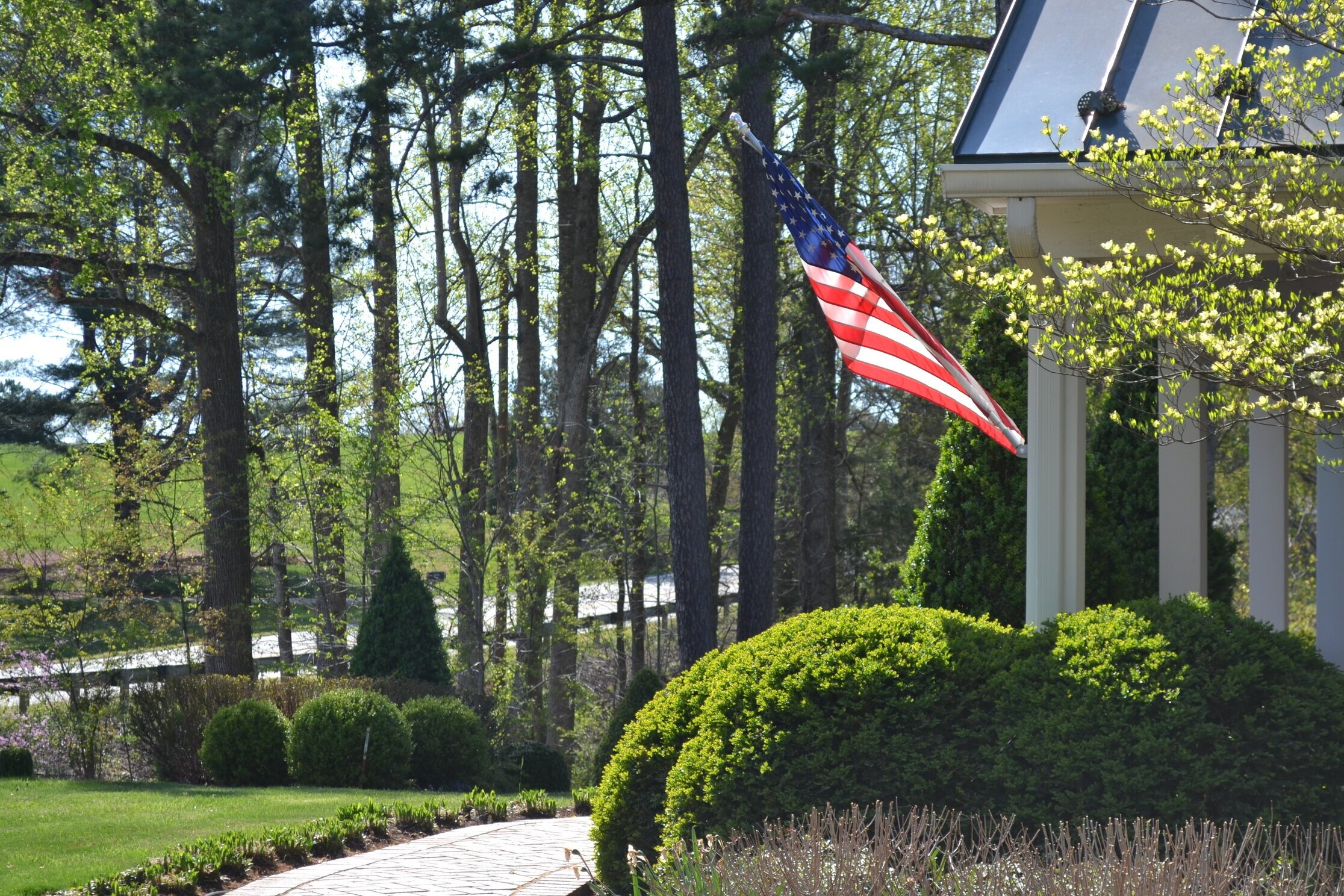Older boxwood that are established in the landscape can survive longer periods of drought because of their more extensive and established root systems.
As we trudge through the peak of summer heat, irrigation and water is on everyone’s mind. In Central Virginia, it is common to see several weeks of unforgiving heat which can lead to dry soils and drought. Summer showers that sweep through offer some relief but rarely are absorbed into the ground enough to really help a boxwood.
The arrows show holes on the drip tape where the irrigation water escapes.
It is important to have plants in the landscape that can tolerate the ebbs and flow of the seasons. Boxwood are known for their toughness and their drought tolerance which makes them a great addition to any landscape. However, just like any plants, they have their limits, and extended periods of drought can require supplemental water. Pay close attention during these hot and dry summer months, so that boxwood do not stress. For the first 1-2 years after planting, boxwood grow best with about 1” of irrigation or precipitation a week during the summer months. Allowing the root zone to dry between irrigation events will encourage root growth. Older plants that are well established generally need minimal irrigation because their roots are deeper in the soil.
The black drip tape that runs along the mulch at the base of the plants provides water directly to the roots of the boxwood.
Drip irrigation is the ideal method for watering boxwood. Simple drip systems can be installed either on top of or under the mulch and will offer thorough irrigation without wetting the foliage. In a drip system, water seeps from the drip tape without splashing. It enters the ground without puddling and conserves water. The rate of water from drip tape is very low, typically ¼” per hour per emitter. With almost direct access to the roots, less water is wasted thereby reducing costs and environmental impact. Drip irrigation is ideal for places where water may be limited during times of drought.
Not only is drip irrigation more cost effective and beneficial to the environment, it is better for the plant because it drastically reduces the amount of water that splashes onto the leaves of the plant. Fungal diseases such as Boxwood Blight can be spread through water splashing that often occurs with sprinkler methods of irrigation.
Drip tape is commonly used in field production because of the benefits to the plant and the reduced costs on the environment.
If a drip system is not an option, overhead watering is still acceptable, but it is important to take precautions to protect the plants. Make sure overhead watering takes place in the early morning, giving the leaves ample time to dry. Never water boxwood in the late afternoon or evening because wet foliage through the night can lead to diseases and stress on the plant. Be careful not to overwater or let water pool around the roots for too long, as it can lead to root disease like Phytophthora.
It is important to be smart when watering boxwood. Remember that they can tolerate drought but like anything, they have their limits. Boxwood that show signs of stress from either too much or too little water are unforgiving. Pay attention to provide the appropriate amount of water and boxwood will continue to provide elegant structure to the landscape for many years to come!




